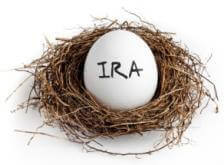IRA Contribution Overload
Correct excess IRA contributions and avoid taxes and penalties.
In this show I’ll share tips for what to do if you discover that you’ve contributed too much to your traditional or Roth IRA.
 Why an IRA?
Why an IRA?
The Individual Retirement Arrangement, or IRA, is one of my favorite savings vehicles because it offers so much flexibility and tax savings. Most IRAs give you a wide variety of investment choices, whether you’re very conservative or like to throw caution to the wind. We know that the recession has made it difficult for many to continue socking money away for retirement. So if you maxed out an IRA for the 2008 tax year, pat your back and let me say, “Good job”! And if you haven’t done it yet but still want to, there’s some time left.
IRA Deadline and Limits
The deadline to contribute funds to an IRA for the 2008 tax year is April 15th of 2009. The maximum allowable contribution for traditional or Roth IRAs is $5,000 if you’re under 50 and $6,000 if you’re age 50 or older. There’s a special exception for those who participated in a workplace 401(k) plan maintained by an employer that went into bankruptcy. If this is your situation, the IRA contribution limit is generally increased to $8,000 no matter your age.
Make Timely Corrections
But what if you overloaded your traditional or Roth IRA account by mistake? Excesses could be the result of contributions from you, your spouse, your employer, or from a botched rollover. The good news is that excess contributions can be corrected without penalty if handled in a timely manner.
Let’s say Johnny is 35 years old, earned $40,000 in 2008, and contributed a total of $6,000 to his traditional IRA. Since his allowable limit is only $5,000, he has an excess of $1,000 in the account. If Johnny withdraws the excess, plus any earnings it made, on or before the due date of his tax return, it’s like it never happened! This due date can be extended, so be sure to file for an extension before April 15th if you can’t complete a necessary IRA withdrawal on time.
Dealing with Withdrawn Earnings
However, if Johnny made some money on his excess contribution of $1,000, that income must not only be withdrawn from his IRA, but is also subject to taxes. For example, if he earned 2% interest on the excess, or $20, a total of $1,020 will need to be withdrawn from his IRA. The $20 is subject to ordinary income tax and is also considered an early distribution that gets hit with an additional 10% penalty tax. Distributions taken from IRAs before you reach age 59½ are non-qualified withdrawals subject to this nasty 10% penalty.
The calculation of how much you earned on excess contributions is determined for the period the excess remained in the IRA. It takes into account the performance of all the IRA’s assets, not just one particular stock, for example. Your IRA custodian can help you figure how much you earned or lost on any excess contributions.
Roth IRA Income Limits
Contributions to Roth IRAs are only allowed if the owner’s modified adjusted gross income doesn’t exceed certain limits. For those with tax status as single, head of household, or married filing separately, the maximum income limit is $116,000. It’s $169,000 for those who are married filing jointly. Because of these income limitations it can be very easy to mistakenly contribute to a Roth IRA if your income turns out to be more than you expected.
Help Me Fix It!
Once you realize that you’ve contributed too much, contact your IRA custodian or tax professional right away. An excess contribution that isn’t withdrawn by the deadline is subject to a 6% tax penalty each year that it remains in an IRA. It’s important to try to prevent excess IRA contributions from occurring in the first place, but it’s even more important to get them corrected on time to avoid significant taxes and penalties.
Administrative
I’m glad you’re listening. Send me your thoughts at money@quickanddirtytips.comcreate new email“>money@quickanddirtytips.comcreate new email.
Chi-Ching, that’s all for now, courtesy of Money Girl, your guide to a richer life.
Additional Resource:
IRS Publication 590: Individual Retirement Arrangementsopens PDF file
Image courtesy of Shutterstock


 Why an IRA?
Why an IRA?